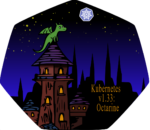
Red Hat is announcing the release of two new offerings today: Red Hat OpenShift Virtualization Engine and Red Hat Connectivity Link.
Red Hat OpenShift Virtualization Engine
Red Hat OpenShift Virtualization Engine is a new version of OpenShift designed entirely for virtualization workloads.
According to the company, this new version offers features to help deploy, manage, and scale virtual machines (VMs), removing other OpenShift features unrelated to those tasks.
It is powered by Red Hat OpenShift Virtualization and the KVM hypervisor, and it can run on on-premises hardware that supports RHEL or on supported bare metal cloud services, such as AWS bare metal instances.
To assist customers in migrating from other virtualization software, this platform includes access to Red Hat’s migration tool and the Virtualization Migration Assessment, a workshop with Red Hat experts that helps companies determine a path to low risk migration. It also integrates with Ansible, which allows IT Teams to migrate VMs at scale.
“Virtualization solutions are in the bedrock of most private and public cloud environments,” said Mike Barrett, vice president and general manager of Hybrid Cloud Platforms at Red Hat. “As organizations look to modernize their virtual environments to meet the demands of today’s IT climate, we have found that no two organizations are at the same point in their virtualization journey. This causes diversity in the approaches they want to take with the solutions Red Hat provides. Red Hat needed to change how we were offering our virtualization solution to accommodate organizations that wanted to use only the Red Hat OpenShift product features focused on virtualization. Red Hat OpenShift Virtualization Engine and Advanced Cluster Management for Virtualization allow Red Hat to significantly lower the price point of the solution to meet those users where they are in their modernization efforts.”
Red Hat Connectivity Link
The company also announced Red Hat Connectivity Link, a solution that helps companies connect their applications and infrastructure.
According to the company, the adoption of cloud-native architectures, containers, and Kubernetes has resulted in “an explosion of applications, services and endpoints,” leading to challenges related to configuring and connecting them. This new offering is designed to enable companies to address those challenges by providing a more cohesive way of managing application traffic.
It is based on the open source project Kuadrant and leverages the Kubernetes Gateway API and Envoy to create an integrated management experience.
Authentication policies, rate limiting, DNS configuration, and TLS management are all specific through Kubernetes objects.
It also supports orchestrators such as Istio and OpenShift Service Mesh, which provides users with greater flexibility when managing connectivity.
“Application connectivity, within and across distributed infrastructure environments, is fundamental to developing and scaling cloud-native workloads such as generative AI applications. Red Hat Connectivity Link is an integrated, unified solution that enables platform engineers and application developers to streamline operations, more efficiently scale across multiple environments and enhance security and compliance management across multiple layers of infrastructure using emerging cloud-native standards.”








